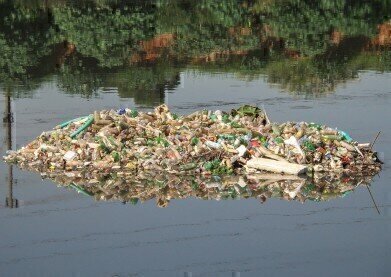Water/Wastewater
What Are the Consequences of Having Polluted Rivers?
Sep 21 2021
By the most recent count, a staggering proportion of Britain’s rivers suffer from rampant pollution. A mere 14% of English waterways meet “good” ecological criteria as defined by the Environment Agency, while none of them achieve “good” chemical status. Indeed, the water quality of rivers in England is apparently the lowest in the whole of Europe, signalling the enormity of the problem.
But aside from the ignominy of that unwanted accolade, what are the tangible after-effects of poor water quality? How do polluted rivers affect the flora and fauna which live in them and the humans which depend upon them for drinking water, irrigation needs and other vital purposes? Here are three of the most common and most concerning consequences of river pollution in the UK.
Eutrophication
The Environment Agency figures released earlier this year revealed that agricultural run-off has displaced sewage wastewater as the biggest cause of river pollution for the first time. The widespread use of fertilisers and pesticides, which contain high concentrations of chemicals like ammonia and phosphate, means that these contaminants eventually find their way into our rivers.
Once there, they cause a process called eutrophication, which involves the proliferation of blue-green algae atop the surface of the water. This vegetation blocks out sunlight and prevents plants beneath it from photosynthesizing effectively, while the bacteria which feed off it also consume more than their fair share of oxygen in the water, thus endangering aquatic fish, mammals and other organisms, as well.
Food chain disruption
Improper disposal of physical waste items means that there is an unacceptable amount of plastic pollution in our rivers. Larger fragments of these discarded products can either strangle or entangle the bodies of fish, mammals and crustaceans, while smaller ones less than 5mm in diameter – known as microplastics – can be mistaken for food and consumed.
While the exact impacts of microplastic pollution on the internal organs of aquatic organisms are not fully understood, they certainly cannot be beneficial. What’s more, these tiny particles are often consumed by the smallest animals – but they are then eaten by larger predators, and so on. In this way, plastic pollution infiltrates the food chain and accumulates in the stomachs of even the largest water-dwelling species. The same is true of heavy metals, chemicals and other contaminants, as well.
Disease and death
If these contaminants are allowed to accumulate into large enough concentrations, they can even pose a risk to human health. That’s because someone who eats a contaminated fish or shellfish can contract any number of gastrointestinal complications. At best, this might cause a few hours or days of stomach discomfort; at worst, it could jeopardise their life.
Similarly, drinking from a polluted water supply is equally hazardous to human health. Indeed, in the developing world, diseases like cholera, typhoid and hepatitis remain among the biggest killers. Although we are very fortunate in the UK to benefit from a robust wastewater treatment system, there are occasions when bacteria can slip through the net – as happened in Lancashire with the cryptosporidium scare several years ago.
Events
May 05 2024 Seville, Spain
May 13 2024 Munich, Germany
May 23 2024 Beijing, China
May 23 2024 Beijing, China
Jun 10 2024 Algiers, Algeria













